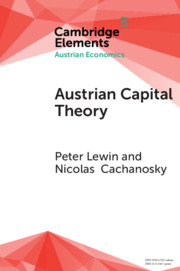Element contents
Austrian Capital Theory
Published online by Cambridge University Press: 13 January 2019
Summary
Keywords
- Type
- Element
- Information
- Series: Elements in Austrian EconomicsOnline ISBN: 9781108696012Publisher: Cambridge University PressPrint publication: 10 January 2019
References
- 34
- Cited by

